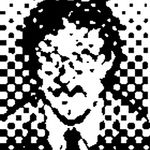- Home
- Illustrator
- Discussions
- s, "Is there a parameter one can set to increase...
- s, "Is there a parameter one can set to increase...
Copy link to clipboard
Copied
Hi.
Is there a parameter one can set to increase Illustrator's precision for drawing objects with Bezier curves such as circles?
Thanks.
 1 Correct answer
1 Correct answer
s,
"Is there a parameter one can set to increase Illustrator's precision for drawing objects with Bezier curves such as circles?"
The long answer is yes.
Here is some smalltalk about it:
The (default) Bezier circles with 4 Anchor Points are (very) accurate at the Anchor Points and midway in between, in other words angles divisble by 45 degrees, and bulge in between.
To get closer to a true circle you need to create the circle with more than the (default) 4 Anchor Points.
I believe
...Explore related tutorials & articles
Copy link to clipboard
Copied
Can you elaborate a bit?
What kind of parameters do you have in mind. What is the purpose?
Copy link to clipboard
Copied
Perhaps the order of the Bezier curve or some other parameter that can be set in Illustrator (like the Pathfinder Precision we talked about the other day, which is unrelated to this topic). The purpose is to enhance the capability of Illustrator to draw proper circles, at the expense of processor power and memory I suppose.
Copy link to clipboard
Copied
No, there are no settings that may do what you are looking for.
As for circles: One cannot draw real circles in Illustrator. It is always just an approximation.
In general: "Real" circles (based on their mathematical definition) are pure imagination. You will never be able to draw one.
Copy link to clipboard
Copied
One can certainly draw circles with a better precision than Illustrator, and reduce the error between drawn circle and ideal circle.
Copy link to clipboard
Copied
Of course, that may be true.
But I'm still curious about the practical purpose of your request. Are you doing some kind of hyper-precise constructions that may fail if using Illustrator as it is?
Or is it something else?
Copy link to clipboard
Copied
I have large circles and they don't intersect where they should with other objects. Unfortunately, the error due to Illustrator's approximation for drawing circles is clearly visible and would not pass muster even for print.
If there are known workarounds people use to better approximate circles in Illustrator, be it only for sections of the circle, I'm all ears.
Copy link to clipboard
Copied
Probably it may be useful if you were providing at least one sample .ai file that may explain your request better.
Ideally, with some instructions included. Then one can take a look and think about it.
Copy link to clipboard
Copied
s,
"Is there a parameter one can set to increase Illustrator's precision for drawing objects with Bezier curves such as circles?"
The long answer is yes.
Here is some smalltalk about it:
The (default) Bezier circles with 4 Anchor Points are (very) accurate at the Anchor Points and midway in between, in other words angles divisble by 45 degrees, and bulge in between.
To get closer to a true circle you need to create the circle with more than the (default) 4 Anchor Points.
I believe you will like the free Ovalize/Circle script(s) here, which does just that:
If you need to have (very) accurate intersections at certain angles, you may be able to (set a corresponding number of Anchor Points and) rotate the circle(s) to fit (or should I say hit) those angles.
If you just wish to have a generally truer circle, you can try different numbers and choose one.
Hi Kurt.
Copy link to clipboard
Copied
Hi Jacob. Thanks for your input. Where can I set the number of anchor points (without a script)?
Copy link to clipboard
Copied
s,
Have you downloaded and installed/inserted the script(s) and clicked to open?
Is the above question the answer?
Edit: I was writing a bit more into my previous post when you posted, so it may be worth a reread.
Copy link to clipboard
Copied
Hi Jacob,
Thanks for the additional information, I appreciate it. After reading your post:
-I reviewed the description for the javascript script Ovalize provided by Hiroyuki Sato (but haven't viewed or downloaded the code).
-I reviewed this related thread: https://community.adobe.com/t5/illustrator/is-there-a-way-to-draw-a-perfect-circle-in-illustrator-cc...
It would be great if Adobe maintained an official repository of third-party written scripts, validated by Adobe.
I would prefer to avoid the script route in this case, though scripting has sometimes access to routines that aren't available in the Illustrator interface. Perhaps this is the case for Ovalize (is Ovalize using PathPoint?). Is it possible to replicate what that script is doing manually?
I am looking into the polygon tool right now and testing the feasibility of doing a piecewise approximation of a circle with the number of sides as a variable (precision vs. complexity trade-off), and comparing it to the 4-point Bezier curves Illustrator uses to draw a circle.
Copy link to clipboard
Copied
"It would be great if Adobe maintained an official repository of third-party written scripts, validated by Adobe."
I wouldn't hold my breath for that.
JavaScript is well documented and human can read it. So if you want to check a script, just go ahead (it's not that hard). Or pay someone to check it for you (for the more complex cases).
Copy link to clipboard
Copied
"I wouldn't hold my breath for that."
Neither would I. 😉
I am familiar with JavaScript but have not written a script for Illustrator in a while and it would take me some time to get back up to speed.
Copy link to clipboard
Copied
s,
"Is it possible to replicate what that script is doing manually?"
Indeed it is; but it takes a far from insignificant amount of care and time.
Concerning your concern over the use of the script(s) from 佐藤浩之 (Satō Hiroyuki), it/they have been enjoyed and recommended by many for many years, including the fourth commentor in the uservoice article linked to below, which was linked to in the thread that you linked to.
Copy link to clipboard
Copied
Thanks to Jacob's recommendation, I relented and have been test-driving the ovalize.jsx script. It does a fine job. Thank you Hiroyuki Sato, if you read this.
But as I use it, I am hitting some issues. For example, with a compound path.
Here is the scenario: I make a compound out of two paths (like a large circle with a smaller circle inside, on top). The compound shows a hole in the large circle, as expected. That's my starting point SP.
1- I run the script on the compound. Both circles are adjusted, according to the number of anchor points. But the hole is gone.
2- I release the compound first, then run the script on both circles at the same time, make the compound. Still no hole.
(note that if I release the compound, then do not run the script, and make the compound, the hole is back)
3- I run the script on each circle separately (before my starting point SP), before making the compound. Then I create the compound. The hole appears.
If I start with a compound path, even if I then release the compound, appears to cause a problem with the script. How can I use the script on a compound path?
Copy link to clipboard
Copied
s,
Before getting the opportunity to try it, I believe you can just use Pathfinder>Minus front (or back) instead of Compound Path; or reverse (the direction of) either path.
Copy link to clipboard
Copied
Pathfinder>Minus front just creates a compound path too, doesn't it?
That being said, I did this: Made a compound path, ran the script, no hole. On this object, I then did:
-release the compound path, make the compound again: no hole.
-release the compound path, Pathfinder>Minus front: hole!!
-release the compound path, make the compound again, reverse direction of one of the circles: hole!!
-reverse direction of one of the circles (without releasing the compound path): hole!!
Copy link to clipboard
Copied
s,
Exactly, and (luckily) just as I expected.
There is also the fifth way (once you have the Compound Path): Pathfinder>Minus front without releasing the Compound Path: Hole.
You can apply Effect>Stylize>Add Arrowheads, and later Effect>Apply Add Arrowheads, all the way through and (literally) see the whole (or should I say hole) explanation.
Copy link to clipboard
Copied
What's weird is that in the last example, if I do "undo attribute changes", it reverses the direction of the selected circle back but the hole doesn't disappear again.
All these different ways (other than "make compound path") you mentioned, the Layers Tool still calls the result "compound path" but are they?
I also noticed that the script doesn't work on a clipping path. I must release the clipping path first.
Copy link to clipboard
Copied
Copy link to clipboard
Copied
Jacob, another problem I am facing with the script is that it doesn't work on type on a path. If the path is a circle (with type on it), I cannot apply the script to the path (even after selecting the path alone) as the object as a whole appears to be type, not path.
Thanks Ton. I had a quick readthrough. I will read it again in more detail as I was not familiar with the direction attribute in this context.
Copy link to clipboard
Copied
s,
"All these different ways (other than "make compound path") you mentioned, the Layers Tool still calls the result "compound path" but are they?"
Indeed they are, as you can also see in the article that Ton kindly linked to.
Concerning the Type on a Path and other questions, it is more straightforward/convenient to start by creating circles with the Ovalize/Circle scripts, just as you started with the 4 point circles, then take it from there; a bit like building a house from the bottom up, the circles corresponding to the foundation everything is built upon. With existing artwork, it is inevitably more complicated, and some dismantling may be called for.
In the Type on a Path case, you ought to be able to select and copy the Type with the Type on a Path Tool, then (re)create the circle with the desired number of Anchor Points, then click it with the Type on a Path Tool and insert.
Copy link to clipboard
Copied
By the way, I don't think the script can be reproduced manually because it uses the PathPoint(s) routine, which gives access to the anchor point control handles and their position (leftDirection, rightDirection). That can't be done accurately (meaning "not by hand") in Illustrator, as far as I know.
Copy link to clipboard
Copied
s,
Splitting your latest post to make room for comments,
"By the way, I don't think the script can be reproduced manually because it uses the PathPoint(s) routine, which gives access to the anchor point control handles and their position (leftDirection, rightDirection)."
Quite true, and this is one good reason for using scripts, such as the Ovalize/Circle script(s); obviously there is still a small inaccuracy, depending on the number of Anchor Points).
"That can't be done accurately (meaning "not by hand") in Illustrator, as far as I know."
If you mean that it is not possible to do it (create a circle with more than 4 Anchor Points) accurately by only using the inherent tools and guidance that Illy (job description Adobe Illustrator) kindly helps us with, I will repeat myself (from an earlier post here):
Indeed it is; but it takes a far from insignificant amount of care and time.
And the last part is another good reason for using the Ovalize/Circle script(s).
-
- 1
- 2
Find more inspiration, events, and resources on the new Adobe Community
Explore Now


